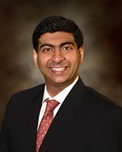
Sumeet K Tewani
Rockford Gastroenterology Associates, USA
Title: Does anesthesiologist-directed sedation afford superior deep cannulation rates and procedural outcomes for ERCP in the community setting
Biography
Biography: Sumeet K Tewani
Abstract
The study aimed to compare outcomes by sedation class in community patients undergoing index endoscopic retrograde cholangiopancreatography (ERCP). The aim of this presentation is to summarize the findings of the study, comparing gastroenterologist directed sedation (GDS) with anesthesiologist directed sedation (ADS), with a focus on rates of successful cannulation, sedation failure, and procedural failure. The primary endpoint of the study was defined as successful deep cannulation of the intended target duct. Sedation failure was defined as agitation or airway compromise prompting termination of ERCP. Reasons for procedural failure included surgically altered anatomy, luminal obstruction, and technical failure. A total of 1079 patients was included from May 2005 to May 2011, 90% utilizing GDS and 10% requiring ADS. Case complexity was defined by the grading system proposed by the working party of the ASGE Quality Committee. Cannulation success rates were similar between the two groups. There were no statistical differences between sedation groups in procedural or respiratory adverse events. Technical failure was the predominant basis for deep cannulation failure in both groups. Agitation and airway compromise accounted for failure to achieve deep cannulation similarly in both groups. The need for reversing agents was lower, but similar in both groups. There was no statistical advantage in deep cannulation success rate of complexity grade in either sedation class. Excellent procedural outcomes and low adverse event rates were achieved using GDS, a more accessible and cost-effective method in a community-based setting.

